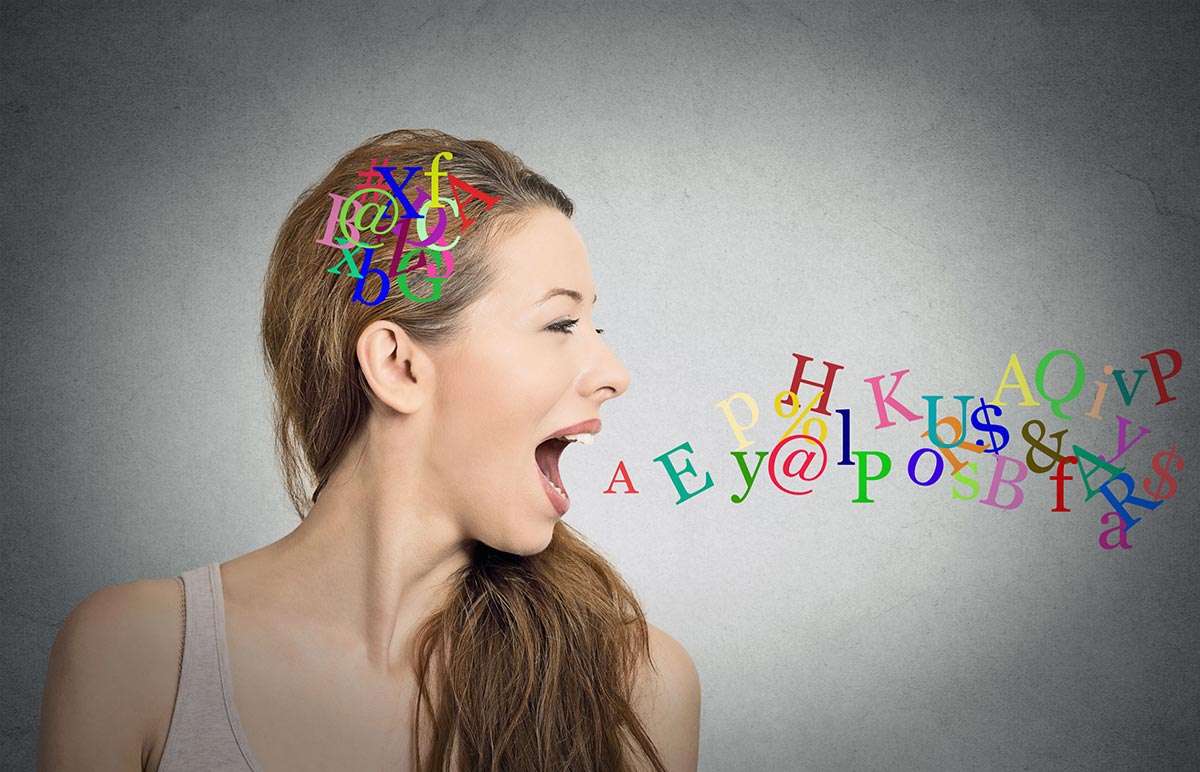The International Phonetic Alphabet (IPA)
The IPA is a symbol that represents a speech sound and is a unit of an alphabet. This symbol can represent a single speech sound, or it can represent a group of words that produce the same sound.
A phonological alphabet is a writing system that reflects the way that a language sounds. However, the degree to which letters in an alphabet correspond with phonemes varies from language to language and from one writing system to another.
The International Phonetic Alphabet (IPA)
The International Phonetic Alphabet (IPA), also known as the Association Phonetique internationale, is an alphabet of symbols that linguists use to transcribe speech sounds from various languages. IPA was published in 1888 and is a standardized system of transcribing the sounds of spoken language that can be used to represent a wide variety of languages.
One of the most useful aspects of the IPA is that it allows a single symbol to represent a sound, regardless of the spelling of the word in which that sound appears. This can be very helpful when trying to identify a sound in an unfamiliar language, especially for children.
Each IPA symbol represents a particular speech sound, which may be a vowel or consonant sound. Several symbols are also used to indicate pitch and tone, the quality of a speech sound. These include diacritics placed over the nucleus of the syllable or Chao tone letters that can be positioned before or after a word or syllable.
Many IPA symbols are ambiguous in that they can be interpreted as either close to their designated values or as diverging from them for legibility or other reasons, such as c> for affricates typically pronounced [tS] or j> for palatalized alveolar consonants, e.g., English c for [t-s] and j for [d-z].
In addition, there are some symbols that are not used as IPA symbols at all: full capital letters, such as i>, are often used as archiphonemes or in natural classes of phonemes, but they are not a part of the IPA or even standardized by the Handbook, although they are basic to Voice Quality Symbols.
Another ambiguous IPA symbol is the superscript letter kw>, which has the same articulatory description as a labialized k> but can be read as either simultaneous k and w or else as labialized k with a w release. This is due to the ambiguity of superscript letters in general; it can be difficult to determine whether a superscript letter means a modification of a sound or phonetic detail at the end of the sound, and thus is often used as a typographic convenience instead of an IPA symbol.
IPA Symbols
The IPA is an alphabet used to transcribe the speech sounds of different languages. Each symbol is a unit, or “phonetic sign,” that represents one sound (a consonant, vowel or diphthong).
It is made up of 107 letters and 31 diacritics that modify the pronunciation of the standard letter. In addition, there are 17 additional signs that indicate suprasegmental qualities, such as length, tone and stress.
Most symbols represent a single speech sound, but some are modified for special sounds or anatomical movement. These include consonant letters that don’t create a sound when they are voiced, such as ssssss; and small capital letters, which indicate guttural sounds.
Among consonants, g> is a small capital letter for the “guttural” sound g; b> is a small capital letter for the sound b; and l> is a small capital letter for the consonant l. Several of the vowel letters also have small capitals, including u>, which is a small capital letter for the open-mid central unrounded vowel u; and y>, which is a small capital for the close-mid central unrounded vowel y.
The IPA combines Roman characters and letters from other scripts. These are modified to conform to Roman style, but some characters are borrowed from Greek and Cyrillic.
Some of the symbols are adapted for use in African languages, notably via the Africa Alphabet. The IPA has been modified to accommodate the alveolo-palatal and epiglottal consonants of many sub-Saharan languages, such as Hausa, Fula, Akan, Manding, Kabiye and Togolese.
These symbols are incorporated into the IPA as capital case variants, such as D d for the consonant d and NG NG for the consonant n. The IPA chart has a section on “other symbols” where it lists these variants.
The International Phonetic Association (IPA) is an international organization that develops and publishes the International Phonetic Alphabet, which is an alphabet of 106 symbols. Linguists use the IPA to transcribe speech sounds from all languages.
Using the IPA will enable you to sound more like a native speaker of your target language. This is especially helpful if you’re learning a new language and want to learn how to pronounce the sound of that language correctly. In addition, knowing the IPA will teach you how to position your tongue, lips and teeth properly so that your speech sounds more naturally.
Vowels
A vowel (from the Latin ‘vocalis’, meaning ‘uttering voice’ or’speaking’) is a symbol that represents a speech sound and is a unit of an alphabet. Vowels are characterized by an open configuration of the vocal tract, whereas consonants are characterized by a closure at one or more points along the vocal tract.
The acoustics of vowels are well understood and can be visualized using spectrograms. Different formant values (acoustic resonances) in the vocal tract show up as dark bands, and the relative positions of the jaw, lips, and tongue affect these acoustic parameters.
There are several types of vowels: diphthongs (two sounds occurring in the same place), pure vowels, and unvoiced vowels. The chart below shows the main sets of vowels used in English, with additional ones marked as they are rare.
As a general rule, you should be able to make the four vowel sounds represented in the chart, namely a, e, i, and o. In addition, a small number of words can have other vowel sounds.
These can include: u, o, and y. A few other words have other vowel sounds, such as v and sh, but these are not commonly used in English.
Most languages have at least three phonemic vowels. Some have more, including Adyghe and many Sepik languages. A very few languages have fewer, such as Arrernte, Circassian, and Ndu.
In some languages, such as Kensiu, the long a and u are written with the same symbol, and true-mid vowels may be contrasted with close-mid vowels by using a lowering diacritic [e, o, o, u, o]. Other languages have a combination of close-mid and true-mid vowels.
Some languages also have a variety of other vowels, including the schwa and nasal sounds. However, these are not generally represented by symbols as they are often pronounced in voiceless or whispered forms. In addition, some words that contain these sounds do not have them spelled out, such as mute and fun.
Consonants
A symbol that represents a speech sound and is a unit of an alphabet, the set of letters used to write words. Early alphabets like Egyptian hieroglyphs relied on pictures and symbols rather than letters to represent a word, phrase or idea.
Generally, consonants represent a closed or narrowed airstream in the vocal tract. They are distinguished from vowels by the manner of articulation (the way in which the obstruction occurs) and the presence or absence of voicing, nasalization, aspiration, or other phonation.
The places of articulation vary, but most consonants are made with the lips or tongue against the roof of the mouth. This includes labial, coronal, and dorsal consonants.
Some sounds use the base of the tongue and the soft palate. These are called dental consonants, and some are made with the tongue against the alveolar ridge.
Other types of consonants include the plosives, which use the lips to make a tiny sharp sound. Examples of plosives are b and p, which produce the sounds /p/ and /f/, respectively.
Besides being classified by the places of articulation and manners of articulation, consonants are also classed by voice quality. Voiced consonants are produced when the vocal cords vibrate; unvoiced consonants are produced when the vocal folds are wide apart and do not vibrate.
In IPA, there are four main classes of consonants: stops, fricatives, approximants, and trills. The first group, called stops, are characterized by the most severe obstruction of the vocal tract.
Next, there are the fricatives, which have less obstruction and are pronounced more smoothly than the stops. Finally, there are the approximants, which are pronounced more gradually and have the least obstruction.
The official IPA chart lists the different kinds of consonants according to the places of articulation and the manners of articulation. These classifications start with the top of the chart and move down toward the glottis, and they are based on where the airstream is impeded in the vocal tract.
In addition, there are several subcategories of consonants, such as labiodental, coronal, and dorsal, which use specific parts of the tongue, throat, or vocal tract to make a specific sound. There are even consonant blends that combine several different consonants to create a complete sound and word, known as digraphs, trigraphs or tetragraphs.






